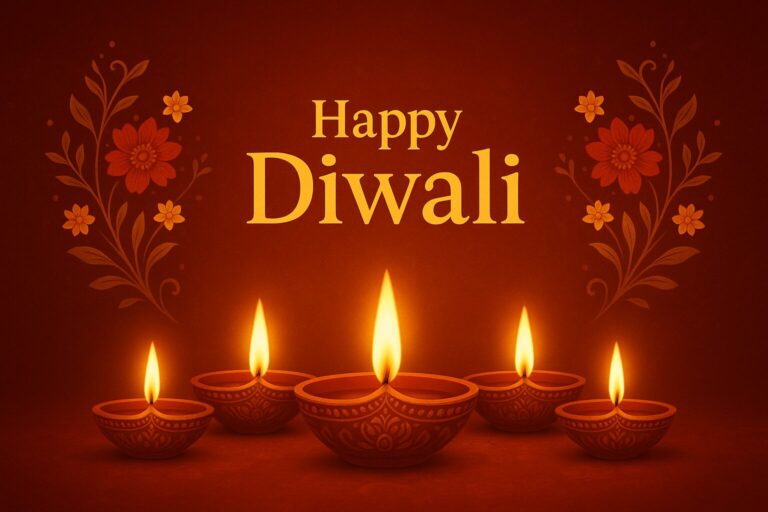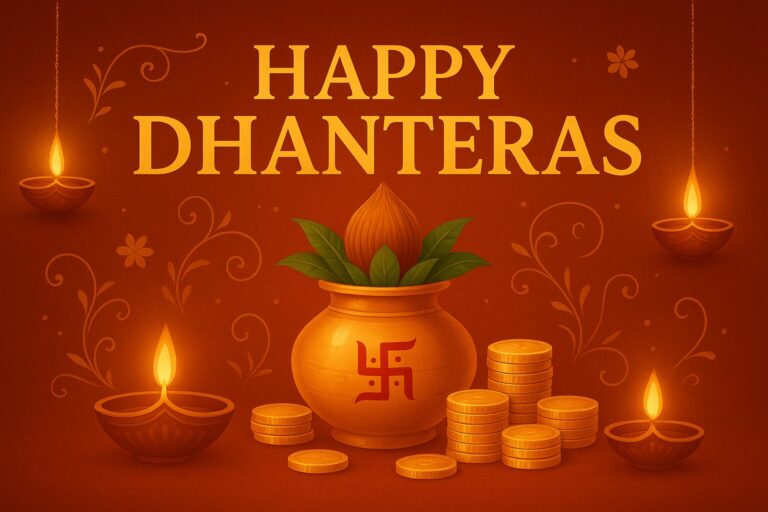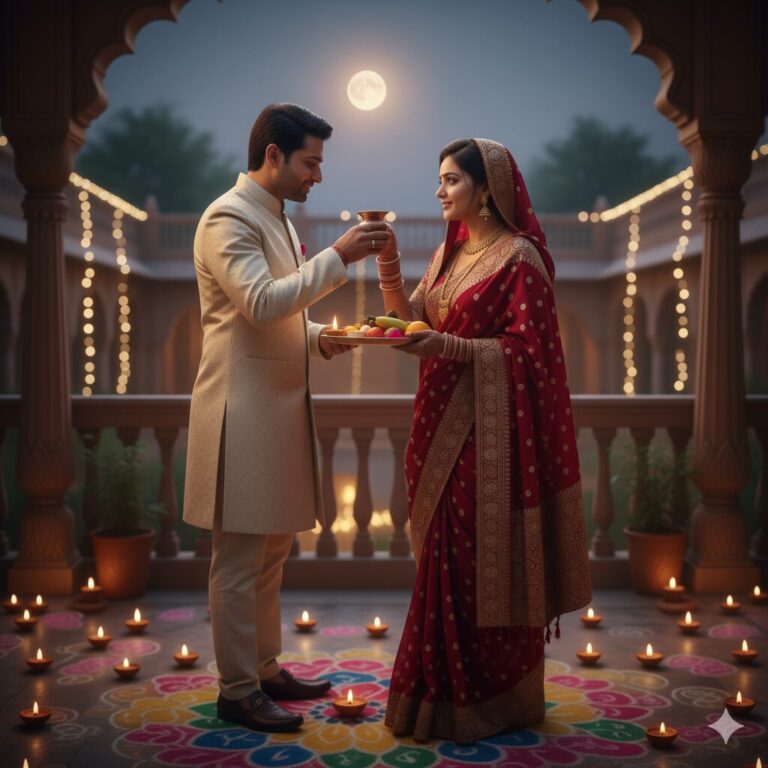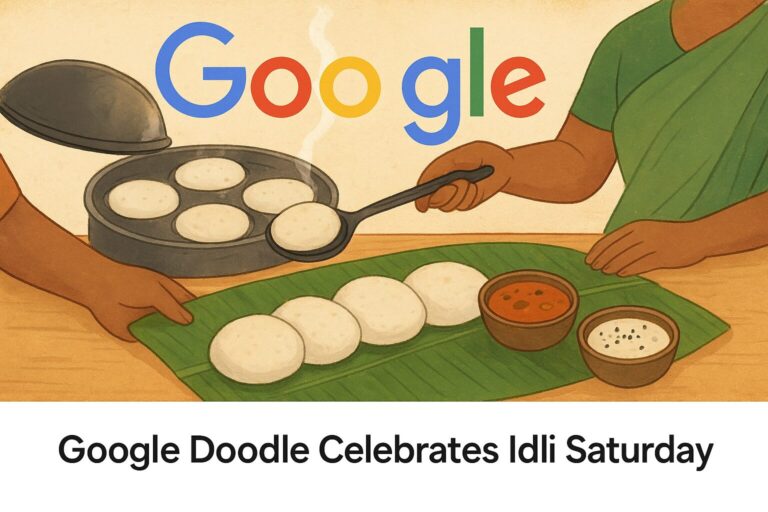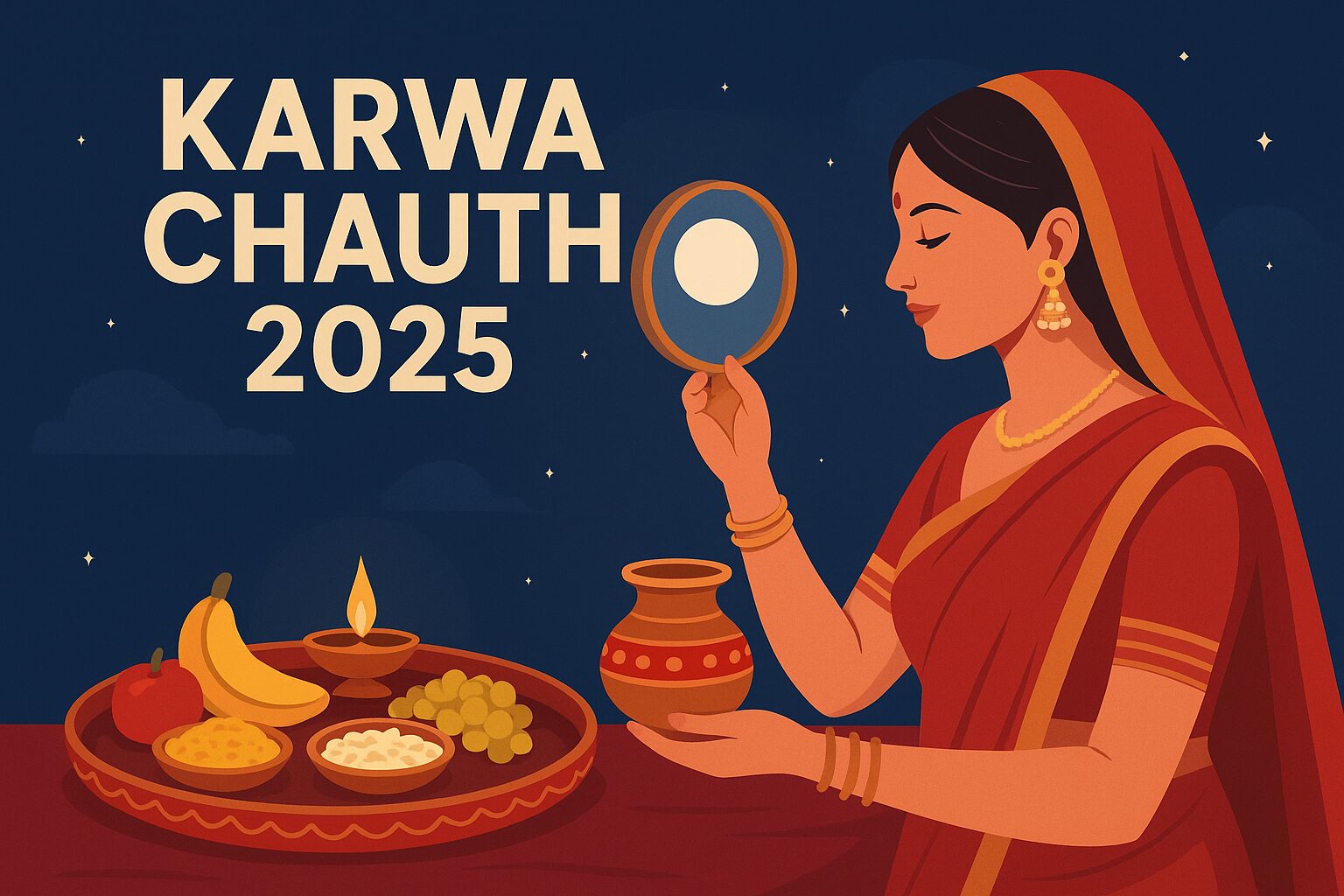
Karwa Chauth Vrat Katha
Karwa Chauth is one of the most sacred and emotional festivals for married Hindu women. On this day, women observe a nirjala vrat– a fast without food or water- from sunrise to moonrise, praying for their husband’s long life, prosperity, and well-being.
Karwa Chauth Vrat Katha
Long ago, there lived a beautiful princess named Veeravati, the only sister of seven loving brothers. She was married to a noble and handsome king, and the couple shared deep love and affection.
After her marriage, Veeravati returned to her parents’ home to celebrate her first Karwa Chauth. Her mother explained the importance of the fast- that a wife who observes it with full faith ensures her husband’s long life and health.
Veeravati began her fast early in the morning. She took a bath, wore new clothes, adorned herself with solah shringar (sixteen ornaments of a married woman), and promised not to eat or drink anything until the moon rose in the night sky.
As the day went on, Veeravati grew weak and faint because she hadn’t eaten or drunk anything. Seeing their beloved sister suffer, her seven brothers became very anxious. They tried convincing her to eat something, but she refused, saying,
“I will not eat or drink until I see the moon. My fast is for my husband’s long life.”
Her brothers, unable to bear her condition, decided to trick her lovingly. They climbed a nearby hill, lit a fire behind a tree, and held a sieve in front of it so that it looked like the moon had risen. When Veeravati saw the glowing light through the branches, she believed the moon had appeared.
Thinking the moon had risen, Veeravati offered arghya (water) to it and broke her fast by taking food and water. But as soon as she ate, she felt her heart sink with worry. A messenger arrived from the palace bringing terrible news —
Her husband, the king, had suddenly fallen unconscious and was lying lifeless!
Veeravati fainted on hearing this. Her heart broke, and she wept bitterly. She realized she had mistakenly broken her fast before the real moonrise, deceived by her brothers’ love and concern.
Devastated, Veeravati prayed with all her heart to Goddess Parvati, begging for forgiveness and asking the goddess to restore her husband’s life.
Touched by Veeravati’s devotion and purity, Goddess Parvati appeared before her and said,
“Veeravati, your faith is true, but your fast was broken before its time. You will need to observe this fast with full devotion again, and your husband will regain life.”
Veeravati faithfully observed the Karwa Chauth fast again, performing all rituals correctly. Moved by her sincerity, the goddess blessed her, and her husband regained consciousness. From that day onward, women began observing the Karwa Chauth Vrat for their husbands’ longevity and prosperity.
Evening Puja and Moonrise Ritual
In the evening, women gather in beautiful attire, with mehndi, jewelry, and red sarees or suits. They listen to this Karwa Chauth Katha while passing the Karwa (clay pot) in a circle during the puja.
After the katha, women look at the moon through a sieve, offer arghya to the moon, and then see their husband’s face through the same sieve — symbolizing that he is the moon of her life.
The husband then offers his wife water or the first morsel of food, marking the end of her fast with love and blessings.
Karwa Chauth 2025 Date and Moon Timings
Date: Thursday, 7th November 2025
Moonrise Timings in Major Cities:
- Delhi: 17:05
- Mumbai: 17:18
- Kolkata: 16:55
- Chennai: 17:02
Women’s Solah Shringar on Karwa Chauth
On Karwa Chauth, married women prepare themselves beautifully with Solah Shringar, which represents sixteen traditional adornments:
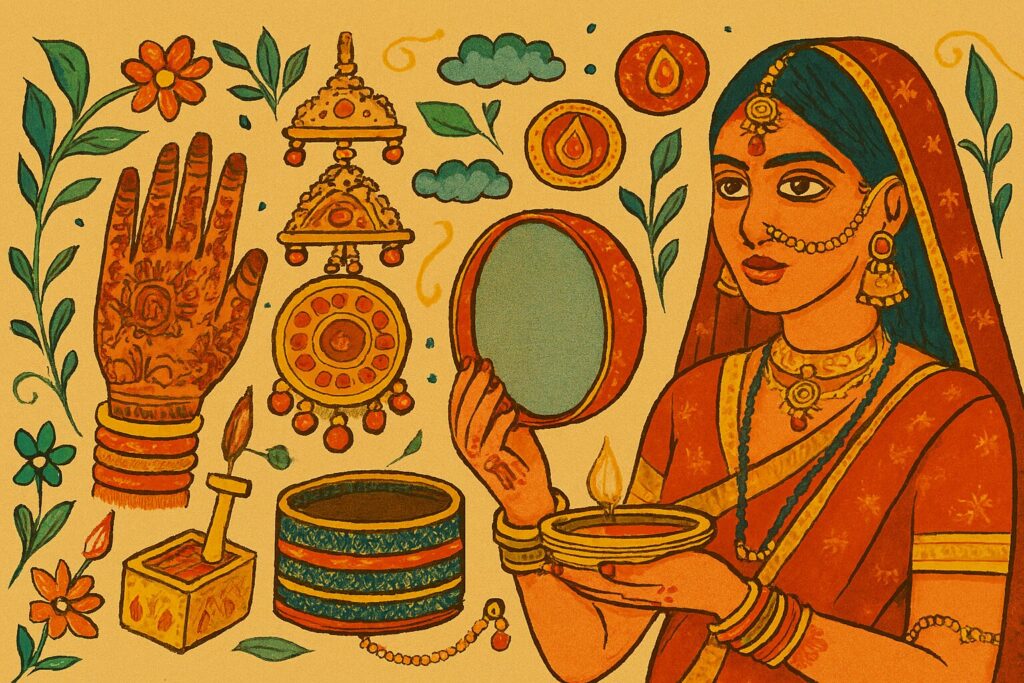
- Bindi – The sacred forehead decoration
- Sindoor – Symbol of marital status
- Mangalsutra – Sacred necklace for married women
- Earrings – Often gold or traditional designs
- Necklace – Enhances beauty and elegance
- Bangles – Worn in abundance, often glass or gold
- Rings – Finger ornaments
- Toe rings – Symbol of marriage
- Anklets – Traditional jewelry
- Maang Tikka – Decorative headpiece on the forehead
- Kohl/Kajal – For the eyes
- Alpana/Mehndi – Decorative hand patterns
- Hair accessories – Clips, pins, or flowers
- Nose ring – Traditional ornament
- Perfume/Fragrance – For elegance
- Footwear – Traditional sandals or slippers
These adornments are considered auspicious and complete the traditional look of a married woman on this sacred day.
Spiritual Meaning of Karwa Chauth Puja
- Karwa (pot) symbolizes peace, wealth, and protection.
- The lamp represents light, faith, and the divine presence in life.
- The fast shows endurance, patience, and devotion.
- The moon stands for love, beauty, and emotional strength in relationships.
This puja reminds us that love built on faith and sacrifice can make every relationship stronger and more beautiful.
The Karwa Chauth Vrat Katha is not merely a story — it’s a timeless message of love, loyalty, and faith. From Veeravati’s devotion to Karwa’s courage, every tale reminds us that true love is about sacrifice and strength.
This festival continues to unite hearts, reminding couples that when faith and love walk together, even destiny can change.
Also read: Karwa Chauth 2025- A Celebration of Love, Faith, and Togetherness

